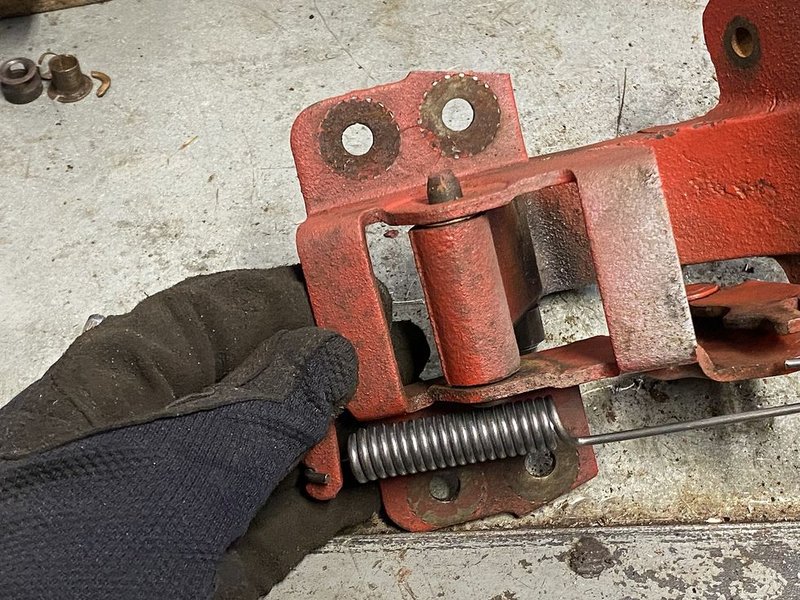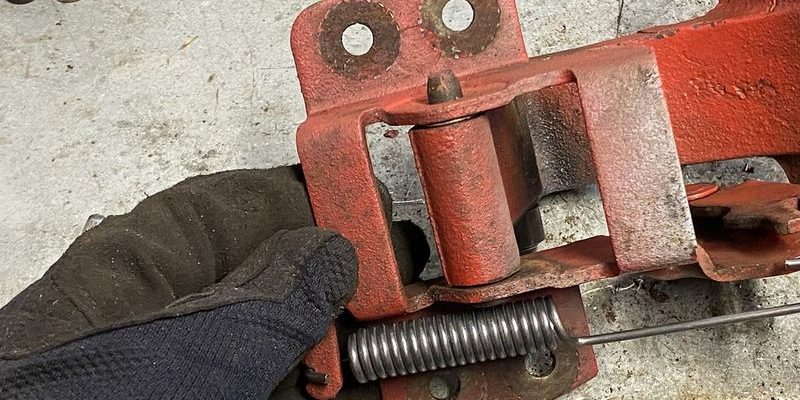
When selecting a tool, it’s essential to find the right spring compressor for your project. Different brands and types specialize in different tasks, so let’s focus on the ones that are most effective for door hinge installations. Picture this: just like cooking, where the right tools make the job easier and more efficient, the same principle applies when working with springs and hinges.
Understanding Spring Compressors
A spring compressor is designed to safely compress and hold springs while you work on them. Essentially, it allows you to manipulate the springs without the risk of sudden release. This is especially important for car doors or other heavy-duty hinges. By keeping the spring compressed, you can focus on installing the hinges accurately without worrying about the spring snapping back and causing harm.
How Does a Spring Compressor Work?
When you place the spring into the compressor, it uses a mechanical mechanism—usually a threaded rod or lever—to apply even pressure on the spring. This compression lets you control the spring’s energy and safely install the hinge. It’s like using a vise grip; you’re creating stability and control over something that could otherwise be quite unpredictable.
Safety First: Preparing for Installation
Before you dive into using a spring compressor, it’s vital to prioritize safety. Working with springs can be dangerous if not handled properly. Here’s how to prep yourself for success:
- Wear Safety Gear: Always use safety glasses and gloves. You want to protect your eyes and hands from any sudden spring movement.
- Clear the Workspace: A clutter-free area reduces the risk of accidents. Make sure your surrounding space is clean and organized.
- Check the Tools: Ensure your spring compressor is in good condition. Inspect it for any signs of wear or damage before starting.
Why Safety Matters
Here’s the thing: springs can store a lot of energy. If a spring gets loose or slips out of your hands, it can be dangerous. By taking these precautions, you’re protecting yourself and ensuring a smoother installation.
Step-by-Step: Using a Spring Compressor
Now that you’re set up for safety, let’s get into the nuts and bolts of using a spring compressor.
1. Position the Spring: Start by placing the spring into the compressor. Make sure it sits securely in the designated slots.
2. Compress the Spring: Turn the handle or threaded rod to slowly compress the spring. Here’s where patience pays off. Don’t rush this step. Keep an eye on the spring to ensure it’s centered and secure.
3. Install the Hinges: Once the spring is compressed, you can now install the door hinges. Follow your door’s specific instructions for hinge placement. Ensure each screw is tight, but don’t overdo it; overtightening can cause damage.
4. Release the Pressure: After the hinges are in place, you can slowly release the pressure on the spring. Turn the handle carefully and watch for any sudden movements.
Why Follow These Steps?
Skipping steps or rushing can lead to incorrect installation or an accident. The detailed approach ensures that each component is secure and functioning correctly.
Common Mistakes to Avoid
Even the best of us can make mistakes. Here are a few common pitfalls to be aware of when using a spring compressor:
- Not Securing the Spring: Failing to properly secure the spring in the compressor can lead to slippage. Always double-check its position.
- Rushing the Compression: Compressing too quickly can create instability. Take your time and observe the spring’s alignment.
- Ignoring Safety Gear: This should be a given, but people sometimes forget safety precautions. Don’t skip the glasses and gloves.
Learning from Mistakes
Every mistake is a lesson. The more you practice using the spring compressor, the easier it will get. Keep these tips in mind, and you’ll find yourself getting better over time.
When to Use Alternative Methods
In some cases, you might wonder if a spring compressor is truly necessary. There are alternatives, though they come with their own risks.
Using Hand Tools: For lighter-duty door hinges, you might consider using just hand tools. However, without a compressor, you’re dealing with more tension and less control.
Universal Spring Compressors: These tools can compress various springs, but be cautious. If they’re not designed for your specific task, they might not offer the same reliability.
Why Choose Wisely?
Using the right tool for the job not only ensures safety but also enhances your efficiency. Weigh the pros and cons of each method to find what works best for you.
Maintain Your Spring Compressor
Just like any tool, your spring compressor needs care to function well. Here are some maintenance tips:
- Clean After Use: Remove any debris or grease after each use to keep the threads functioning smoothly.
- Check for Wear: Regularly inspect the compressor for signs of wear or damage. This prevents accidents and ensures longevity.
- Store Properly: Store your compressor in a dry place, away from moisture and extreme temperatures to prevent damage.
Keeping it in Top Shape
Proper maintenance extends the life of your tools and makes each project easier. Plus, it’s just good practice!
Final Thoughts on Using a Spring Compressor
Using a spring compressor for door hinge installation might seem intimidating at first. But with the right approach, safety measures, and a bit of patience, you can master the process. Always prioritize safety, follow each step carefully, and don’t hesitate to seek help if you need it.
Embrace the learning process, and in no time, you’ll be installing door hinges like a pro, all while keeping your workspace safe and efficient. Remember, each project is an opportunity to improve your skills—so take your time, and enjoy the journey!
